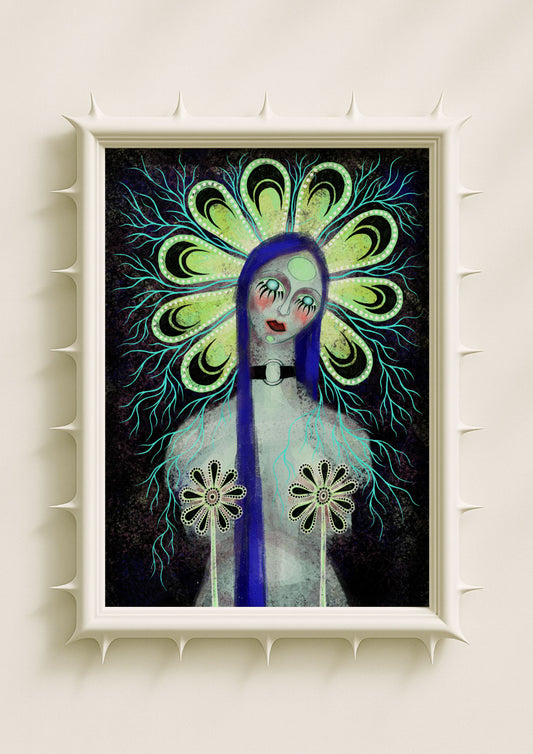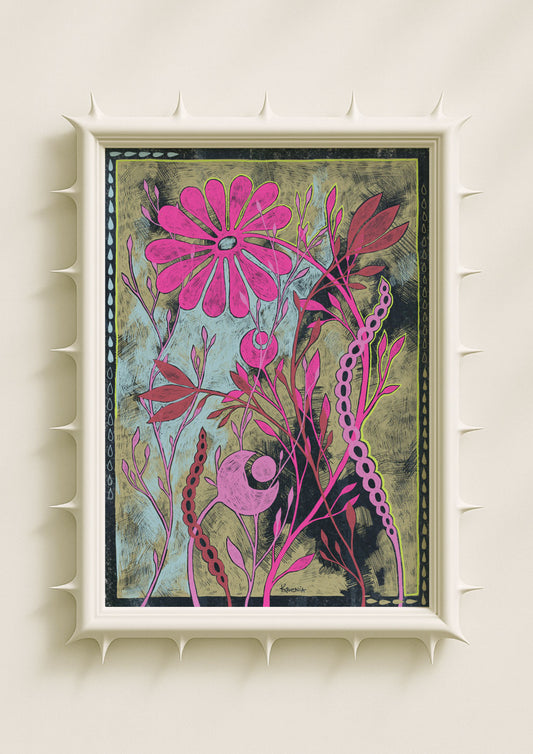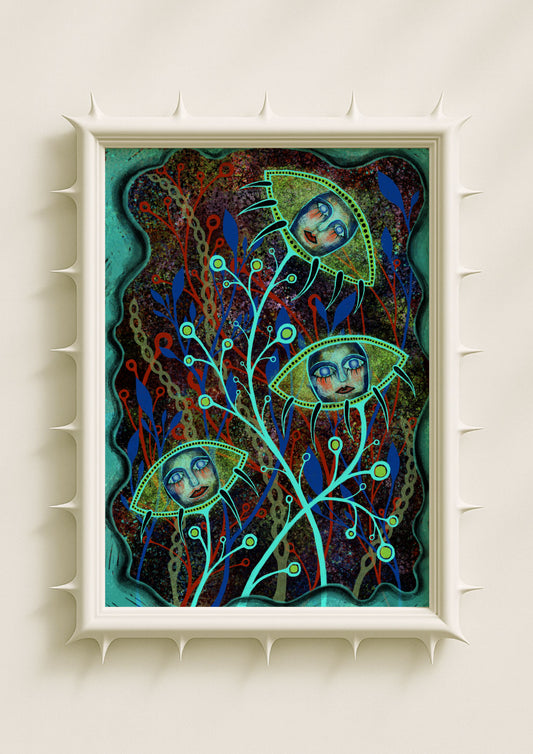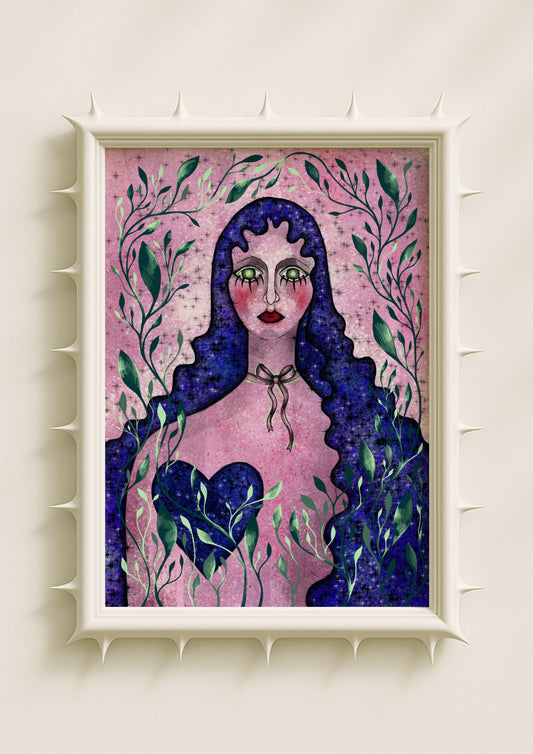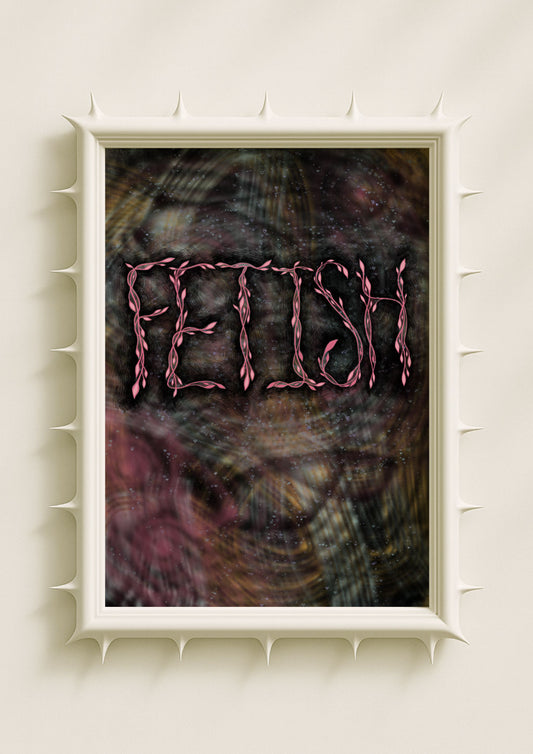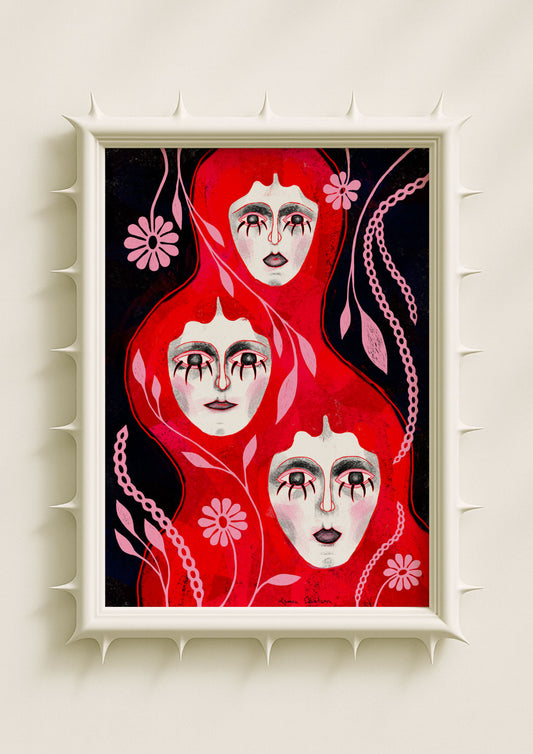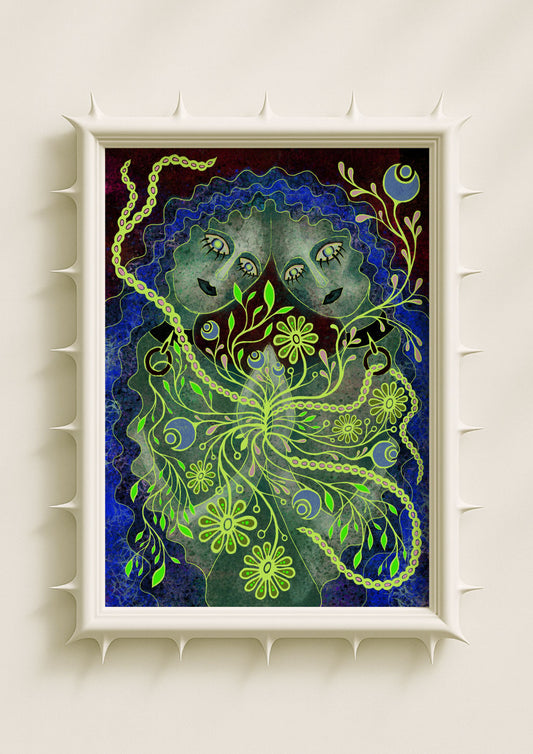The Human Preference for the Unfinished
When looking at modern art prints, viewers often respond more deeply to the pieces that hold a subtle imbalance — an eye placed slightly higher, a contour that wavers, a patch of texture that feels unresolved. These imperfections create an immediate sense of humanity. In my artwork, I let small inconsistencies remain visible because they mimic the natural irregularities of emotional life. A perfectly aligned composition can feel distant, while an imperfect one mirrors how we truly experience ourselves: shifting, layered and rarely symmetrical inside.

Asymmetry as Emotional Honesty
Symmetry can be comforting, but too much of it makes an image feel manufactured. Asymmetry, on the other hand, brings the viewer closer to the emotional truth of an artwork. A slightly tilted face, an uneven shoulder line or an imbalance between light and shadow creates a sensation of presence. These variations introduce subtle unrest — the kind we carry in our expressions, our posture, our internal dialogues. When I let the composition fall slightly off-center, the artwork acquires an honesty that polished balance would dilute.
The Expressive Weight of Uneven Spacing
Spacing — between features, between shapes, between areas of texture — influences emotional rhythm. Even spacing feels orderly; uneven spacing feels alive. In many of my pieces, the negative space around a face or object shifts intentionally. A large area of openness beside a tightly detailed element invites the viewer into a quiet pause. A cluster of marks pressed closer than expected adds tension. This irregular distribution of space mirrors how emotions gather and disperse within us. It creates a psychological rhythm that feels familiar on a subconscious level.

Wavering Lines and the Trace of the Hand
A line that trembles slightly or tapers unexpectedly carries more emotional resonance than one drawn with mechanical precision. These wavering marks reveal the presence behind the artwork — the breath, the hesitation, the internal movement of the moment. When I draw, I keep many of these raw lines untouched because they function like emotional fingerprints. The viewer senses the human hand rather than a polished technique. These lines introduce vulnerability into the composition, making the artwork feel lived rather than manufactured.
Imperfection as an Invitation to Enter
Perfect compositions can create distance. They leave little room for the viewer’s imagination or emotional projection. Imperfection, however, creates openings. A softened mouth, a half-finished botanical edge or an asymmetrical shadow allows the viewer to step into the artwork. The mind naturally wants to fill in what is incomplete. This psychological participation deepens engagement, turning the act of looking into a quiet collaboration between artist and viewer. Imperfection becomes the doorway through which the viewer enters the emotional space of the piece.
Emotional Depth Through Inconsistency
Consistency can feel safe, but inconsistency reveals complexity. A face that carries both crisp detail and blurred contours, or a composition where some elements feel intentional while others remain unresolved, mirrors the layered nature of emotion. In my posters, I often contrast sharp features with faded ones or pair clean shapes with rough textures. This interplay creates emotional depth not by explaining it, but by allowing contradiction to coexist. Imperfection becomes a subtle way of acknowledging that emotional life is rarely singular or smooth.

The Realness of What Isn’t Corrected
Correction often removes the very qualities that make an artwork feel alive. Leaving imperfections visible is a way of respecting the moment of creation — the impulse, the uncertainty, the tension inside the gesture. When the viewer encounters these imperfections, they sense the immediacy of the process. Nothing feels overly curated or filtered. The artwork retains the freshness of something that emerged honestly rather than strategically. In this uncorrected state, the piece becomes more relatable, as if it shares the same raw edges we carry ourselves.
Imperfection as Psychological Truth
What makes imperfection powerful in composition is not the flaw itself, but the emotional truth it represents. It acknowledges that presence is uneven, that feelings rarely align neatly, and that authenticity often reveals itself in the small irregularities of expression. In modern art prints, imperfection is not a technical limitation but a psychological choice — a way of allowing the artwork to breathe, shift and resonate.
Through these deliberate imbalances, the composition becomes more than visual arrangement. It becomes a portrait of human interiority, offering a space where the viewer can recognize aspects of themselves held gently within the structure of the image.
